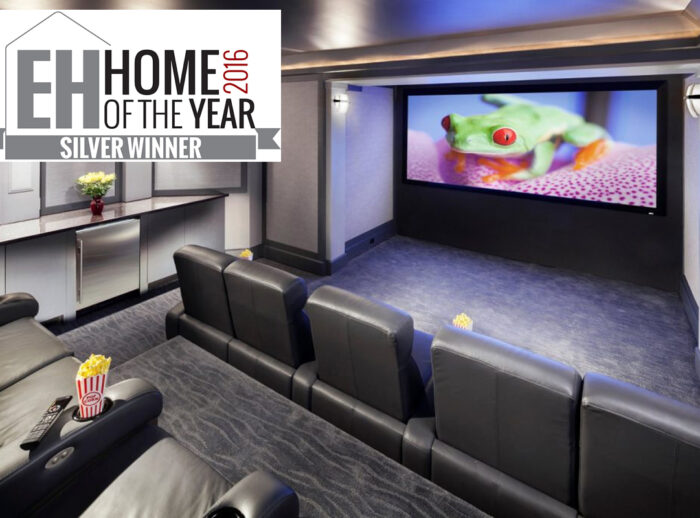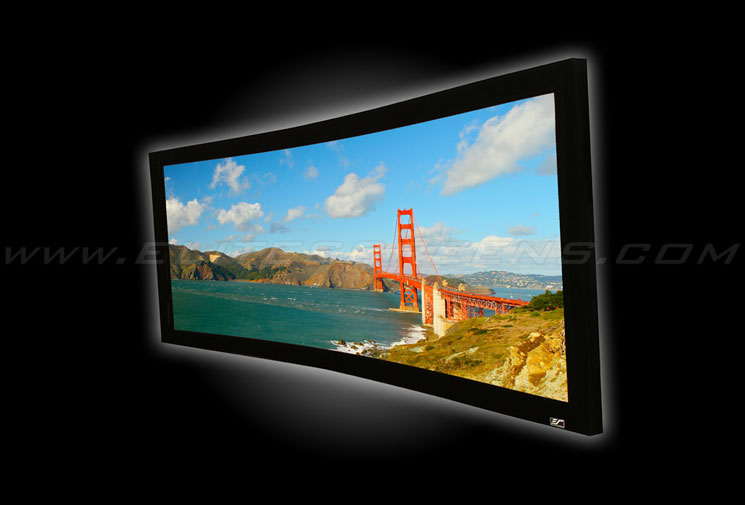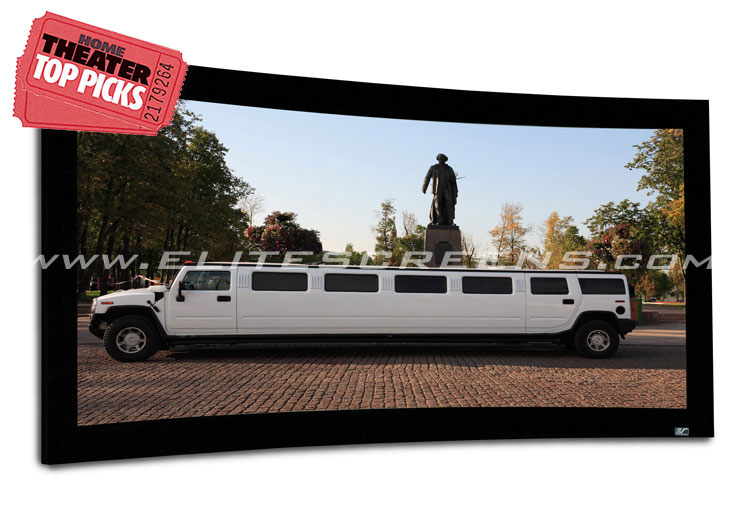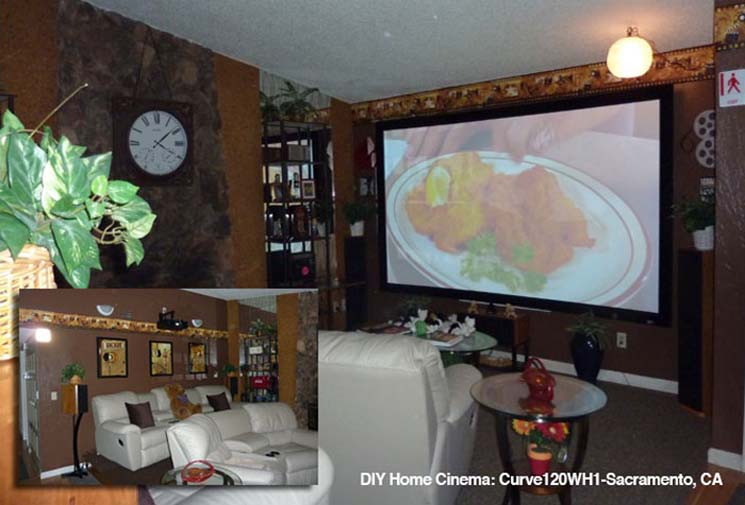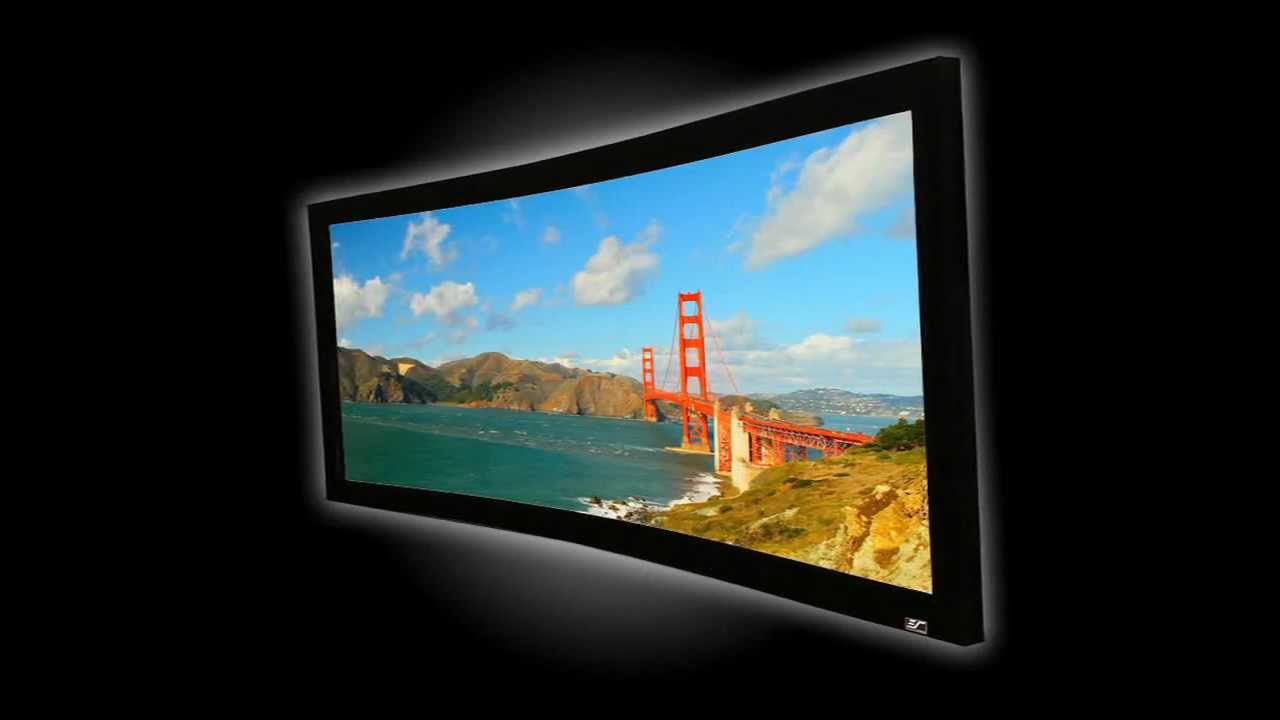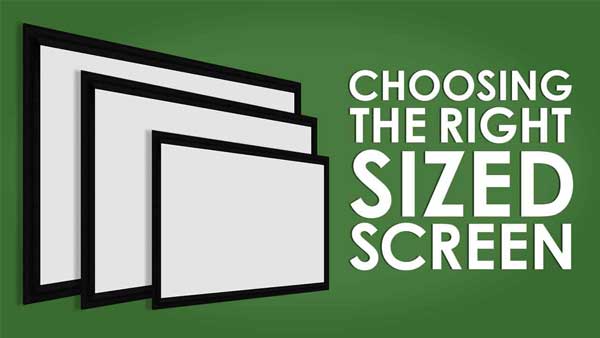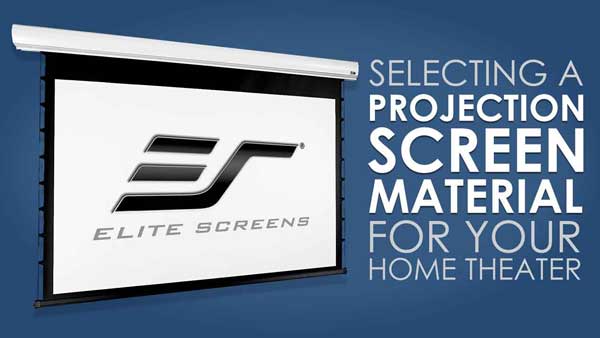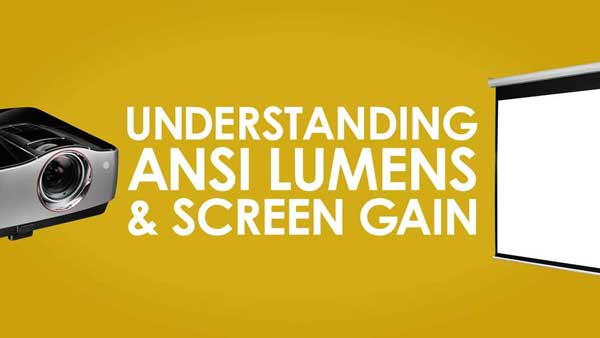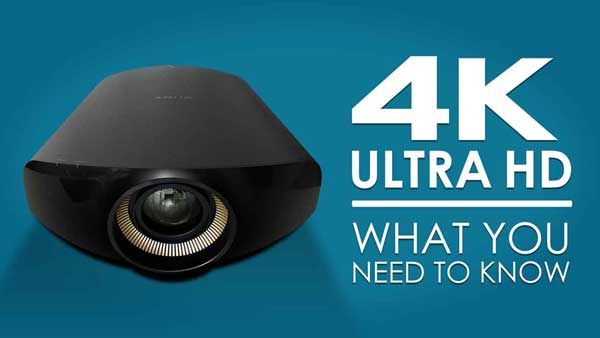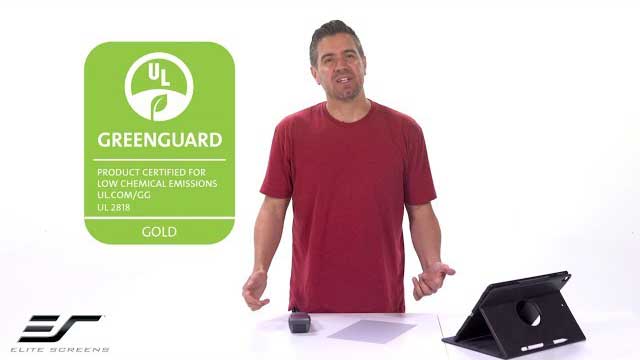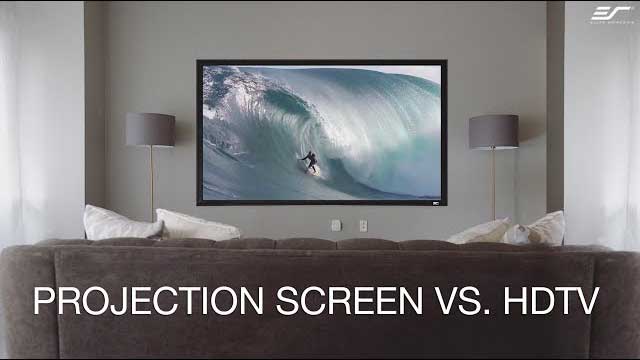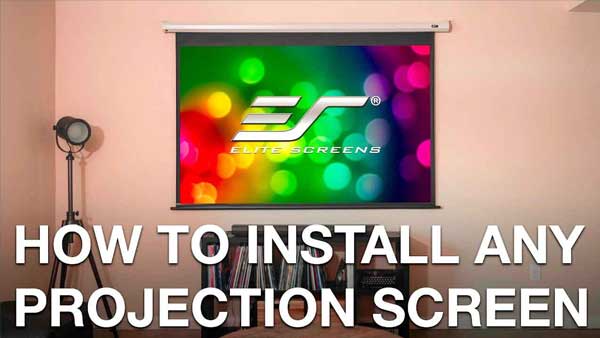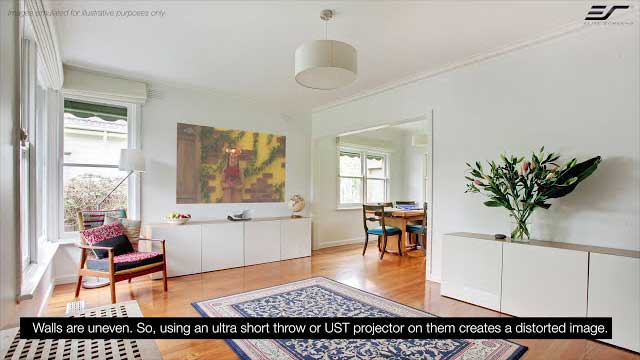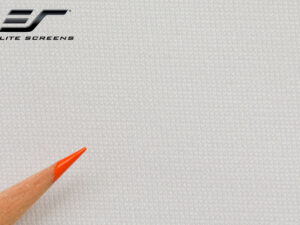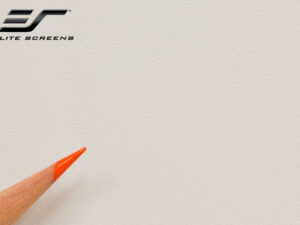Curved Fixed Frame projection screen
Lunette Series
The Lunette Series is Elite Screens curved fixed frame screen with 3.5″ black frame borders that uses the CineWhite® and AcousticPro 1080P3 materials. The curved screen is designed to improve image depth and perception while increasing brightness uniformity.
- Buy a Screen Material Sample clicking here
| Product Weight | N/A |
|---|---|
| Overall Dims | N/A |
Available in the following front projection materials
| Material Name | Gain | Viewing Angle | Description |
| CineWhite® | 1.1 | 180° | CineWhite® has broad light dispersion through diffusion uniformity, black & white contrast and true color rendition. Recommended for rooms with controlled lighting. Works with Standard, Ultra/Short-throw 1080P/4K projectors. |
| AcousticPro 1080P3 | 1.0 | 180° | AcousticPro1080P3 is an acoustically transparent front projection material. The perforated weave eliminates the moire effect while presenting warm neutral colors for today’s HD 1080P (1920×1080) and 4K UHD projectors. This material allows speaker placement behind while allowing an exceptional acoustically transparent performance. |
Screen Material
- 1.1 gain CineWhite® (matte white)
- AcousticPro 1080P3 1.0 Gain Acoustic Transparent material
- 180° Viewing Angle for wide diffusion uniformity
- Active 3D, 4K Ultra HD, and HDR Ready (on CineWhite® material)
- Available in the following range of diagonal sizes:
- 84″ – 230″ in 16:9 format
- 85″ – 250″ in 2.35:1 format
Design and Installation
- Curved Frame Home Theater Front Projection Screen
- Curvature enhances contrast levels with decreased incident light while creating a heightened sense of immersion
- 40’ fixed radial curvature also eliminates the pincushion effect
- Velvet covered 3.5″width aluminum frame border
- Sliding wall mounts provide adjustable horizontal centering
- Adjustable fix plates provide equal tension over the entire projection surface
Quality and Reliability
- 2-year limited warranty, and 3-year warranty for ENR-G – Education, Non-profit, Religious and Government/Military organizations
- Lifetime Tech Support by Elite Screens Professional Service Team through Email, Phone or Online Form.
Acoustic Transparent Material FAQ’s
The AcousticPro UHD/CineWhite A8K performs at its best in a light controlled environment, not in a room that will have ambient light. The material is a fabric with a special weave pattern for projection use. It is suggested to go with our standard CineWhite® material if a matte white screen is needed. Or better yet, our very best CineGrey 3D® or CineGrey 5D® material will perform better with a higher gain and Angular-Reflective front projection with ambient light rejecting technology.
“Yes they can be used with Active 3D projectors.”
No they are not polarized and do not support passive 3D.
Currently, the AcousticPro UHD does not have black backing. However, the AcousticPro UHD incorporates a dense synthetic weave with an average size perforation of 0.32mm designed to mitigate light penetration.
Please refer to the images below to the determine the front and rear side.

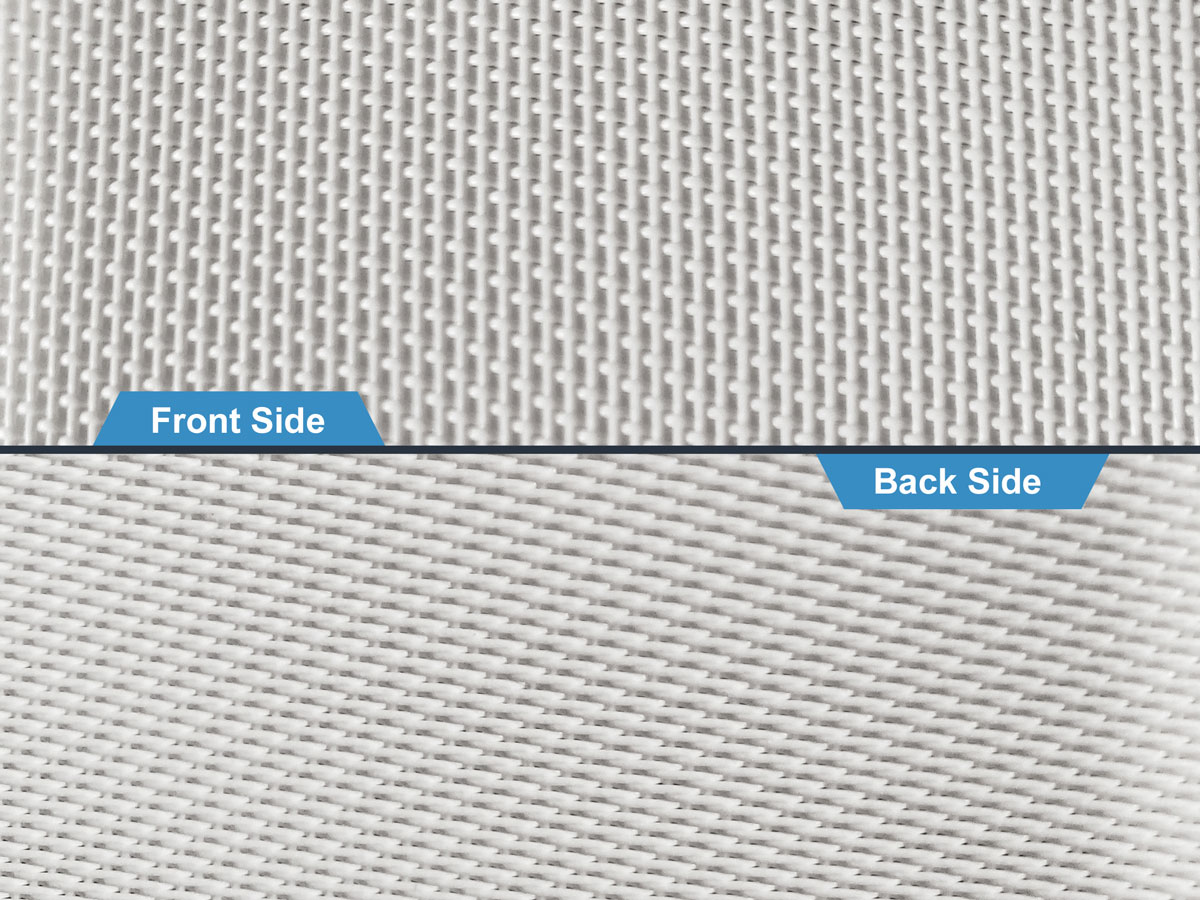
A projection screen mounted flush against the wall over a properly installed in-wall speaker will have a sufficient distance by itself. There will generally be about a 1” total distance between the speaker’s dust cap (depending on make/model) and the screen with a 5mm (.2”) spacing between an in-wall speaker’s grill and the AT screen material itself.
As long as the in-wall speakers do no touch the materials or approximately 1”.
The CineGrey 5D®/CineGrey 3D® (AT)/CineGrey 4D (AT) are great for dark room environment also, but we must understand its limitations. First of all, both materials have narrow viewing angles. So if you wish to have a wide seating arrangement after 80 degrees, you will notice a drop in brightness. Second, because they are higher gain screens they reflect more projector brightness. This may tire your eyes, so we recommend using a less brighter mode if your projector has a such setting. If that is not a problem, then these materials will work. And the best thing is, because they are angular reflective material, the projector’s light will not diffuse in all directions like a matte white material. Meaning that they will not scatter the projector’s light and create side lighting. Thus, eliminating the need to absorb it with black velvet or paint a room really dark. Third, because both of these materials are made with a neutral gray substrate, the color balance and temperature will be exceptional. The dark gray also enhances contrast and great color saturation.

No, ultra-short and short-throw projectors are not compatible with CineGrey 3D® (AT)/CineGrey 4D (AT)/5D® angular-reflective materials.
The AcusticPro UHD/CineWhite A8K/CineGrey 4D AT/CineGrey 3D AT is compatible with Active 3D projectors. As the screen is not polarized, it will not work with Passive 3D applications.
“Yes, the black border is made of the same material as the AcousticPro UHD, thus it is acoustically transparent.”
The entire material is made of the AcousticPro UHD, so it is transparent.
Note: Black masking borders are entirely made of the AcousticPro UHD sound transparent material.
Projecting on a matte white screen material in a dedicated Home Cinema, typically requires a dark room environment for a great theatrical experience. Matte White materials diffuse light in all directions since that is their nature. This means that light will scatter everywhere in the room. That is why a dedicated Home Cinema room should try to have as much black walls and light absorbing materials to reduce the amount of scattered light. This scattered light eventually reflects back to the projection image and degrading the contrast ratio, color, and black levels which affect the fidelity of the picture. The CineGrey 5D’s CLR/ALR technology allows the projector’s light to reflect back at the mirror opposite end. This greatly reduces the amount of light scatter and instead focuses the light to the viewer’s sweet spot. In addition, the black microscopic layers improve black levels and color purity to increase the contrast ratio vs a matte white screen material.
The AcousticPro UHD is available in our Spectrum Series (non-tensioned), Saker Tab-Tension Series (Tensioned), and Evanesce Series.
All acoustically transparent materials on the market today are light enough in thickness to allow sound to penetrate it with low-level attenuation (decrease in sound quality) but normally come at the cost of having considerable light loss as well. Elite’s AcousticPro 1080P3 acoustically transparent (AT) material is an exception to this rule. It has an astonishingly fine (.01mm) micro-perforated texture that allows sound to breathe through the fabric with minimal attenuation. At the same time, it allows the video aspects of the material to perform on the same level as a typical matte-white (non-acoustic) material does. The ultra-fine perforations of the AcousticPro 1080P3 “AT” material allows it to be used with high resolution (4096×2160 pixel ratio) projectors. A special reflective compound coats the surface of Elite’s 1080P acoustic material to compensate for light penetration by reflecting the brightness of the projected image. All these features come together to form a product with superior acoustic transparency that has just 1% light loss while presenting a neutral color temperature (6500°-7000° Kelvin). This is equivalent and in some cases, even surpassing in video performance to a standard matte white non-acoustic projection screen.
The AcousticPro UHD material is a self-supporting, rigid material making it capable of withstanding curling/waving over time as long as it is not in a cold environment. We strongly recommend using the product in a controlled environment with a temperate of approximately 74 degrees Fahrenheit.
Elite Screens’ CineGrey 3D® (AT)/4D (AT)/5D® is a color neutral smooth surface with sparkling elements to increase screen gain in an ambient light room environment. These special characteristics incorporates a diffusion layer over a highly reflective surface which scatters ambient light while improving picture performance with a brighter image. The projector itself, however also plays a big part in creating a hot spot. Projectors highest brightness levels are focused in the center, and only about 70% to 80% in the corners. In other words, the uniformity itself is not spread entirely even across the screen, thus creating a brighter spot in the center area. To combat this, we recommend the following.
1. Reduce the projector’s light output by choosing an economy mode
2. Install the projector further away from the screen, minimum of 1.5 x the image width
3. Go with a lower gain screen
The CineGrey 3D® (AT)/CineGrey 4D (AT)/CineGrey 5D® are angular reflective front projection materials that reflect at the mirror-opposite angle. If an ultra-short throw projector is used, the material will reflect the steep narrow light and reflect it upwards instead of to the viewer’s eye level.
Image shows how a UST projector with CineGrey 3D looks like in a room with ambient light.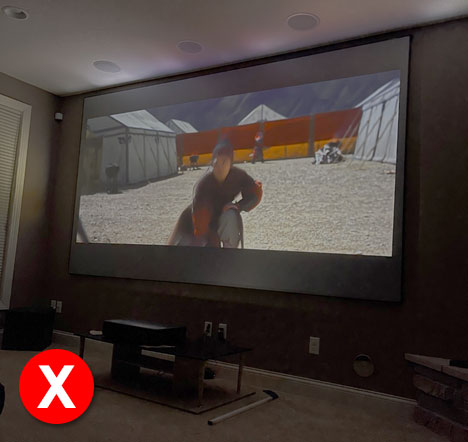
Image shows how a UST projector with CineGrey 3D® looks like in a room with lights turned off
The image appears to look good, but is still reflecting the projector light upwards and causing a hotspot in the middle of the image. Overhead lights are being absorbed/reflected off the material while providing great color saturation, image brightness, and black levels for a contrast rich presentation. Model# AR100DHD3 – CineGrey 3D® EDGE FREE 100” Diagonal 16:9 Fixed Frame with JVC LX-NZ3B 4K HDR Laser Projector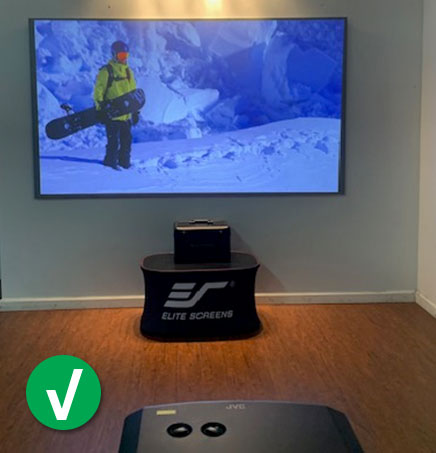
Image shows how good a performance can be obtained using a standard throw projector with ceiling lights above
Lunette / Lunette 2 Series
While the frame structure and screen material performance remain the same between the version 1 and version 2 of the (Lunette, SableFrame,ezFrame) series, there are two main differences.
– Version 2 features a newly designed material that has a rubber-edge border (does not apply to AcousticPro materials) which makes installation a lot easier and a lot less time consuming.
– Version 2 comes with an installation kit that includes wood screws & improved dry-wall anchors, wall brackets, screwdriver, and a mallet.
Both of these new features help speed up the overall process of assembly and installation of your fixed frame projection screen.
The radius curvature is 40 feet.
No, an anamorphic lens is not required for a 16:9 aspect ratio screen. You would only need an anamorphic lens to “stretch” your 2.35:1 image onto a 2.35:1 aspect ratio screen when using a 16:9 projector to eliminate the top and bottom black bars.
The degree of the curve on the Lunette is 15 degrees
Curved screens do not require a special HD (high-definition) projector or lens. A curved screen’s design primarily improves image depth and perception while increasing brightness uniformity. It also creates a heightened sense of immersion for an improved cinematic experience.
No, the 16:9 format does not suffer from the “pincushion” or “barrel” effect that is experience on the 2.35:1 aspect ratio due to its wider format.
Although the edges of a curved screen are (physically) further from the wall than the center of the projection screen is, it does not impact the actual focus of the picture for this reason. When a screen is flat and it is being illuminated by a single center-point light source (aka 1-projector) the light is actually travelling a longer distance to reach the edges of the screen as opposed to the screen’s center. This uneven “throw distance” can actually create distortion that manifests itself in the form of an “hourglass-shaped” image. If a projection screen is properly curved, the light hitting the edges is actually traveling an equal distance to the light rays that hit the center of the screen. If anything, a curved screen provides enhanced clarity on the edges. This is why curved screens and geometric correction features on projectors are a must for many of today’s video aficionados.
Curved screens do not require a special HD (high-definition) projector or lens. Actually, the curve screen is made to enhance the performance of projectors shooting in either a widescreen or cinemascope format. A curved screen’s design primarily improves image depth and perception while increasing brightness uniformity. It also creates a heightened sense of immersion for an improved cinematic experience. When you have a projector with a wide aspect ratio, the light travels a longer distance from the projection lens to the sides of the screen than it does from the lens to the center. This causes the image to distort into an “hourglass on its side”-shape. The curve ensures that the light travels an equal distance to all points of the screen so that the image is proportional. The curve also enhances the viewer’s sense of immersion just like in a large movie theater.
Despite its good looks, a curved projection screen plays a valuable role in today’s home theaters. Residential cinemas are more commonly featuring the same wide “Cinemascope” screen format as one would watch when actually at a movie theater. This wider format looks great but also creates problems that a curve screen design eliminates. The curve serves two purposes. First, it has an aesthetic appeal that draws in the viewer by enhancing a sense of immersion while enhancing resolution and brightness. The curved screen, together with the anamorphic accessories will increase brightness and enhance resolution by up to 30%. It does this by eliminating the black margins that can appear on the projection surface of flat cinemascope screens. Second, it eliminates a visual artifact known as “pincushion effect” which is encountered when scalers and anamorphic lenses are used to create a 2.35:1 (Cinemascope) format. Pincushion effect is when the top and bottom center of a projected image appear to droop inward creating an hourglass-shaped picture. This happens because the light travels noticeably further to the edges of the screen than it does to the center (The further the throw distance, the larger the image), creating unsightly black margins on the screen itself. The curve design ensures that light travels the same distance to reach any point of the screen thus creating a properly proportioned image. Here is a quick video on Pin cushion and curved projection screen.
The curve screens are for enhancing the performance of Cinemascope projection.
- (2.35:1) Curved screens work with the anamorphic lenses and scalers to eliminate 33% of “pixel waste” on the black bars.
- Curved screens properly format the anamorphic image with optimal contrast (effects of the black framework perfectly framing the image)
- Curved screens only real claim to enhance 3D is that their curvature helps eliminate hot-spotting on higher gain (3D) materials
- Curve screens also eliminate the pincushion effect
The “immersion” factor on a curved 16:9 screen is mostly a myth.
- Immersion comes from the wide-angle (Cinemascope) presentations where your peripheral vision is picking up movement from the sides of the screen while you are focused on the center picture.
- 16:9 format is popular for TV sets because your eyes can easily take in the whole image without extra stuff happening off to the sides.
- This is why theaters are 2.35-2.40 and TVs are still 16:9.
General Fixed Frame Screens FAQ’s
In addition to an appealing aesthetic appearance, the advantage of having a black velvet covered frame is to help absorb projector overshoot.
Center support bar for larger size fixed frame screens goes inside the top of the groove located on the back of the frame.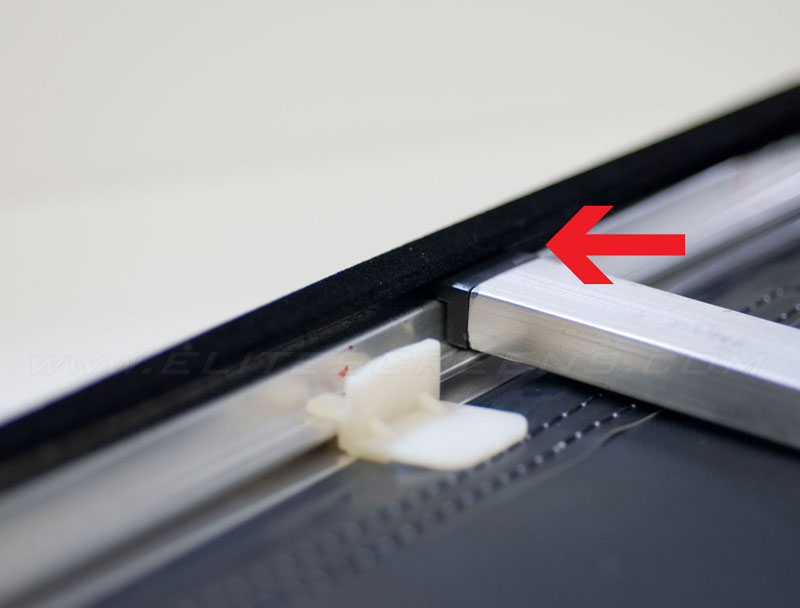
Elite Screens does not recommend attempting such an installation as in most cases it would not be possible. This is because the frame has to be lifted directly above and then placed down onto the brackets. The brackets will then latch onto the grooves of the frame and hold it in place. Mounting the wall brackets flush to the wall and ceiling would not provide the clearance needed for the frame to be lifted above the brackets. Elite Screens recommends the wall brackets be placed no closer than 4-6”(depending on the thickness of the frame) below the ceiling as that ditstance would give you the clearance needed to lift the screen above and then onto the brackets.
2-year limited warranty, and 3-year warranty for ENR-G – Education, Non-profit, Religious and Government/Military organizations
Lifetime Tech Support by Elite Screens Professional Service Team through Email, Phone or Online Form.


